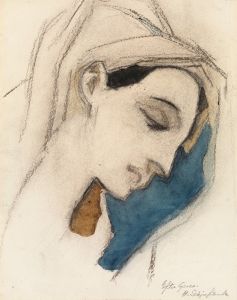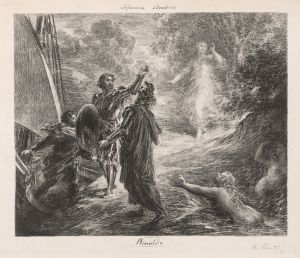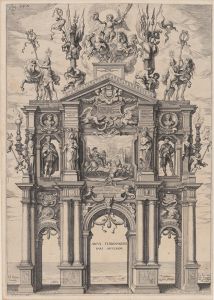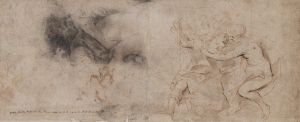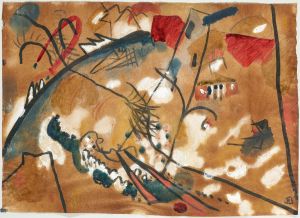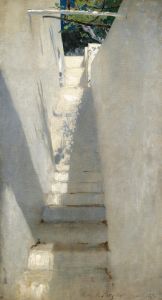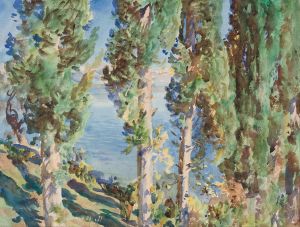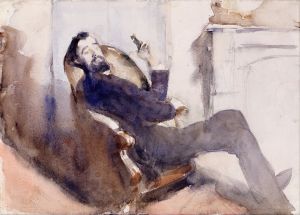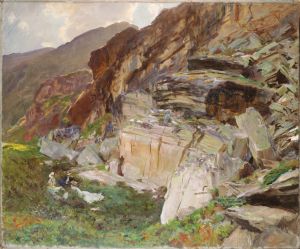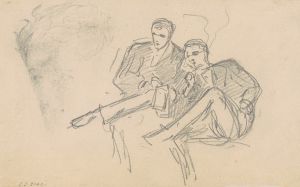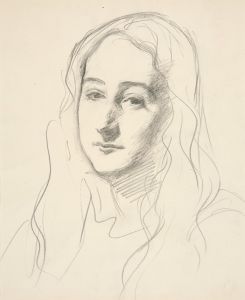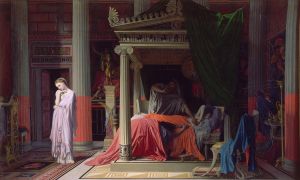
Studies for ‘Two Classical Male Figures Jumping’
A hand-painted replica of John Singer Sargent’s masterpiece Studies for ‘Two Classical Male Figures Jumping’, meticulously crafted by professional artists to capture the true essence of the original. Each piece is created with museum-quality canvas and rare mineral pigments, carefully painted by experienced artists with delicate brushstrokes and rich, layered colors to perfectly recreate the texture of the original artwork. Unlike machine-printed reproductions, this hand-painted version brings the painting to life, infused with the artist’s emotions and skill in every stroke. Whether for personal collection or home decoration, it instantly elevates the artistic atmosphere of any space.
"Studies for ‘Two Classical Male Figures Jumping’" is a drawing by the renowned American artist John Singer Sargent, who is best known for his portraits that capture the luxury and opulence of the late 19th and early 20th centuries. This particular work, however, showcases Sargent's interest in classical themes and the human form, diverging from his more famous portraiture.
John Singer Sargent was born on January 12, 1856, in Florence, Italy, to American expatriate parents. He spent much of his early life traveling throughout Europe, which exposed him to a wide range of artistic influences. Sargent showed an early aptitude for art and eventually studied at the École des Beaux-Arts in Paris, where he honed his skills in drawing and painting.
"Studies for ‘Two Classical Male Figures Jumping’" is a testament to Sargent's mastery of the human anatomy and his ability to capture movement and dynamism in his work. The drawing is executed in pencil and showcases two male figures in mid-air, embodying the grace and athleticism often associated with classical sculpture and art. The figures are depicted with a keen attention to musculature and form, highlighting Sargent's deep understanding of the human body.
This drawing is part of Sargent's broader exploration of classical themes, which he often revisited throughout his career. While he is predominantly celebrated for his society portraits, Sargent's interest in classical subjects is evident in various sketches and studies that reveal his fascination with the art and culture of ancient Greece and Rome. These works often served as exercises in capturing the essence of movement and the idealized human form, which were central to classical art.
Sargent's ability to convey motion and vitality in his drawings is particularly evident in "Studies for ‘Two Classical Male Figures Jumping’." The figures appear almost weightless, suspended in a moment of action that suggests both strength and elegance. This focus on movement aligns with the broader artistic trends of the time, where many artists sought to capture the dynamism of the human body in various states of action.
The drawing is part of a collection of studies that Sargent created, which were not necessarily intended for public exhibition but rather as personal explorations of form and technique. These studies provide insight into Sargent's artistic process and his continuous quest to refine his skills and expand his artistic repertoire.
While Sargent's portraits remain his most celebrated works, pieces like "Studies for ‘Two Classical Male Figures Jumping’" offer a glimpse into the artist's versatility and his engagement with different artistic traditions. They underscore his ability to transcend the boundaries of portraiture and engage with broader artistic themes that have captivated artists for centuries.
In summary, "Studies for ‘Two Classical Male Figures Jumping’" is a compelling example of John Singer Sargent's exploration of classical themes and his exceptional skill in rendering the human form. Through this work, Sargent demonstrates his ability to capture the fluidity and grace of movement, contributing to his legacy as one of the most accomplished artists of his time.





